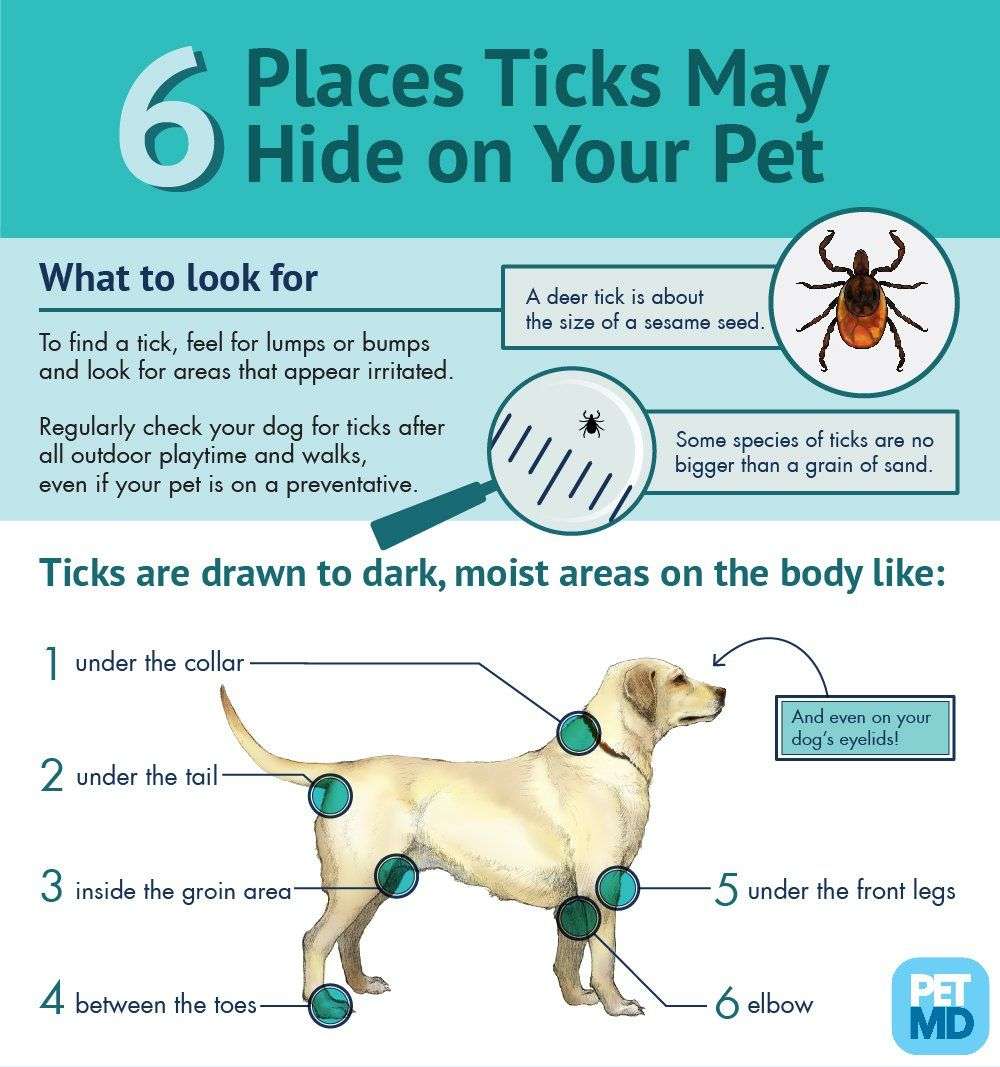Can You Treat Lyme Disease In Dogs
Because the agent responsible for Lyme disease is a bacteria, this means the condition can be treated with the use of antibiotics.
The standard course of treatment involves 30 days of antibiotic therapy, using doxycycline, amoxicillin, and azithromycin.
Many pet owners see improvements in their dogs symptoms in as little as 5 days after antibiotics are administered, with most pups making a full recovery after the 30 days.
However, some dogs will require a longer course of antibiotics, which is why it is so important to test their antibody levels again once they have completed their initial treatment.
Can My Dog Recover From Lyme Disease
Provided the disease is detected and treated effectively early enough, with the course of antibiotics signs of Lyme disease typically resolve within the first 3 days.
However, the organism that causes Lyme disease is very good at hiding and while treatment is typically successful in eliminating clinical signs, dogs that test positive for Lyme disease will remain positive for years, if not forever. If your dog tests positive but is not sick, your veterinarian will tell you whether they recommend treating at that time.
Though most dogs infected with Lyme disease will develop arthritis, the silent killer is the Lyme organism and antibodies produced after exposure, which can damage the filter in the kidneys. The impact of this form of the disease on the kidneys can easily go unnoticed until it is too late. If your vet determines that the kidneys have been affected, this can be treated and monitored before severe renal problems arise.
What Causes Lyme Disease In Dogs
Dogs contract Lyme disease through the bite of infected ticks. These ticks contain the bacteria Borrelia burgdorferi, which is a type of organism known as a spirochete.
Common Causes
There are at least four species of ticks in the world known to carry Lyme disease:
-
Ixodes pacificus
-
Ixodes ricinus
-
Ixodes persulcatus
In the United States, the most common source of transmission is the Deer Tick or Black-Legged Tick, scientifically known as Ixodes pacificus on the West Coast and Ixodes scapularis on the East Coast. In Europe, the Ixodes ricinus and Ixodes persulcatus ticks carry Lyme disease.
These ticks are tiny, which can make them hard to see or feel on your dog, and all stages of the tick can carry and spread the disease, although adult ticks tend to be the most infectious. It typically takes 24 to 48 hours after attaching to a host for the tick to spread the Lyme-causing bacteria, although transmission of disease can sometimes occur much more rapidly.
Certain areas are more prone to ticks than others. Wooded or grassy areas and areas with large tick populations pose the highest risk of infection. Ticks tend to be most active in the spring and fall when they are actively seeking hosts, which increases the risk of Lyme transmission. However, recent evidence indicates that ticks are also active in winter, as long as the temperature is above freezing.
Don’t Miss: Primary Care Old Lyme Ct
How To Diagnose Lyme Disease In Dogs
As we mentioned above, Lyme disease is a bit more challenging to detect in our furry friends.
Most cases of Lyme disease in dogs are diagnosed with a combination of reviewing their clinical signs, assessing their risk of exposure to Lyme disease, and a series of blood tests.
However, some blood tests may only be positive when their body has produced a detectable level of antibodies, meaning false negatives are common.
If your veterinarian fears Lyme disease in your canine friend, the standard diagnostic options they will explore include the C6 SNAP test and the Quantitative C6 test.
The C6 SNAP test is a preliminary test that can be performed in their office, while the QC6 test will require a blood sample to be examined in a lab.
The snap test searches for the presence of antibodies released by the Lyme disease bacterium, while the QC6 can measure the specific levels of antibodies present.
This can also help your vet determine how aggressive their treatment will need to be.
Its also important to note that your veterinarian may suggest performing a full panel of blood work to measure their kidney enzymes, as some cases of Lyme disease can have a devastating impact on the dogs kidney function.
Is There A Vaccine For Lyme Disease In Dogs

Yes. Your veterinarian may recommend the Lyme vaccine if your dog lives in a high-risk area or is in high-risk situations regularly. Like all vaccines, the Lyme vaccine is not 100 percent effective. Even with vaccination, your dog will still need monthly preventatives, and you should still take other preventative measures, like avoiding areas with ticks and manually checking your dog for ticks.
Also Check: Ticks That Carry Lyme Disease Picture
How Long After A Tick Bite Will Dogs Get Sick
If an infected tick has been on your dogs body for 24-48 hours, they have the ability to spread Lyme disease to your pup.
Once the bacteria makes its way into your dogs bloodstream, the clinical signs typically develop anywhere from 2-5 months after infection.
Some dogs have been known to develop symptoms years after their tick bite, proving just how varied this disease can be.
Not only can it take months for symptoms of Lyme disease to develop in dogs, but the clinical signs can come and go if the disease is left untreated.
For example, a dogs limp may disappear suddenly, only to return months later with a vengeance.
Questions To Ask Your Veterinarian
If your dog has a positive Lyme test but no symptoms of the disease or protein in the urine, ask your veterinarian why he or she is recommending treatment. Experts currently recommend against antibiotic therapy under these circumstances because the dogs immune system is holding the bacteria in check and antibiotics are unable to eliminate the infection.
Dogs who have contracted Lyme disease do not develop prolonged, protective immunity and can be reinfected at a later date. Talk to your veterinarian about how best to prevent future infections. Options include measures to prevent the ticks that carry Lyme disease from biting your dog and Lyme vaccination.
Don’t Miss: Will Lyme Disease Go Away On Its Own
Prevention Of Lyme Disease
|
The diagnosis of Lyme disease is often based on the signs and history. For example, a veterinarian might suspect Lyme disease in a dog with recent lameness, a mild fever, and a history that includes possible exposure to ticks. Standard blood studies are not very helpful in diagnosis because the results tend to fall within normal ranges despite signs of infection. However, these tests may be important in order to rule out other causes of disease. Antibodies against the disease-causing bacteria can often be detected 4 to 6 weeks after the initial infection and help confirm the diagnosis.
Where Are Ticks Carrying Lyme Disease Found
Though Lyme disease occurs in every state, risk of infection varies. The vast majority of cases are from the Upper Midwest, the Northeast, and the Pacific case, though recent changes in deforestation, and migrating bird and deer populations have impacted these statistics. Ticks are most often found in farm fields, wooded areas, shrubs and long grass.
Also Check: Do All Ticks Cause Lyme Disease
Lyme Disease In Dogs Can Dogs Get It
Many of us are aware that ticks can spread illnesses through their bite.
Lyme disease is one of the many diseases that ticks can harbor, infecting both humans and dogs with a simple bite.
Lyme disease is a realistic threat in many parts of the country, making it so important for dog owners to be educated on the details of this condition.
In this article we will get into the details of Lyme disease in our canine friends, and help you better understand your dogs prognosis if they are diagnosed with this tick-borne illness.
How Can I Tell If Treatment Is Working
If joint lameness is the presenting sign, improvement may be noted after 3-5 days starting antibiotics. A dog’s response to therapy can be assessed by repeating the QC6 test six months after treatment is complete. Dogs that start with a moderate to high QC6 value typically show a 50% reduction or more in the QC6 at six months, indicating that treatment has been successful. Dogs that have a lower initial QC6 value may not show such dramatic reductions in the QC6 at six months, although the value should still be lower than the starting point if treatment has been successful.
A persistently high QC6 suggests treatment may not have been complete or that the dog became reinfected after treatment was stopped.
Don’t Miss: Lyme Ct Real Estate For Sale
If My Dog Tests Positive Does He Need To Be Treated
The decision to treat Lyme disease is somewhat controversial since many infected dogs show no signs of illness. Factors that would support treatment include:
a moderate to high value of QC6 signs of illness compatible with Lyme disease at the time of testing a history of illness compatible with Lyme disease within the past year the presence of abnormal levels of protein in the urine.
Lyme Disease: What Dog Lovers Need To Know

You probably know Lyme Disease is carried by ticks. Those nasty little parasites look for a warm body to attach to and feed on. Some of those ticks are infected with the bacteria that cause Lyme disease Borrelia Burgdorferi.
However, you might not know that your dog can test positive for Lyme disease and not actually have it. Strange, right? But its true. According to Tufts University Cummings School of Veterinary Medicine, testing positive simply means your pet tested positive for the antibodies but only about 5% of dogs actually develop the illness.
Thats good news for dog lovers!
Yet, you should be aware of the symptoms of Lyme Disease in dogs just in case your pet is one of that 5 %. Its also a good idea to discuss the pros and cons of the Lyme vaccine youre your veterinarian.
The other thing youll want to know is that some dogs will show fever and lameness within 2-3 days and with others…it can take MONTHS before your dog shows any signs. In other words, you can pick 10 ticks off your dog in August and it can be Halloween before your dog starts showing signs of the illness. If you find ticks and your dog shows any signs of lethargy or lameness, go to vet immediately. Acute forms of Lyme are much easier to treat.
Recommended Reading: Will Lyme Disease Go Away
Tick Borne Diseases In Dogs: How To Spot And Prevent These Potentially Dangerous Diseases
Many people think that ticks can only affect humans, but, in fact, dogs are more commonly used as a host than humans. Not only can ticks be shocking and disturbing to find feeding on your pet, but they can also pass serious diseases.
Here at Prairie View Animal Hospital we use the 4dx test to screen our dogs annually for an immune respose to three common tick-bourne diseases, lyme, ehrlichia, and anaplasma. Unfortunately, all three diseases have been diagnosed in patients in our hospital just this year.
What Is The Cost Of Treating Lyme Disease In Dogs
The cost of treating Lyme disease depends on the severity of the disease. If caught early, your veterinarian may prescribe antibiotics along with a follow-up appointment and regular blood work to monitor the condition. If the infection is severe at the time of diagnosis, on the other hand, your dog may require hospital care with supportive treatments , which will be more expensive. Expect to pay for the initial office visit, diagnostic tests, medications, hospitalization, and any follow-up visits.
You May Like: Lyme Disease And Lower Back Pain
Other Canine Diseases Carried By Ticks
Ticks can also carry several other less common but serious bacterial diseases affecting dogs, including anaplasmosis and babesiosis.
Anaplasmosis can involve symptoms similar to those for Lyme disease. Babesiosis can present with a wide range of symptoms, from sudden and severe shock, high fever, and dark urine to a slowly progressing infection with more subtle clinical signs. Diagnosis of both diseases includes blood tests similar to those used to check for Lyme disease.
Sometimes, dogs and people can become sick with co-infection of multiple tick-borne diseases, where more than one type of disease-causing bacteria is transmitted through a tick bite. This situation can make diagnosis and treatment even more challenging and difficult.
Preventing Lyme Disease In Dogs
Whenever your dog has been walking through areas where ticks may hide, its a good idea to check your pet for ticks once you arrive home. Removing ticks isnt as simple as you might think. If you spot a tick on your pooch, contact your veterinarian for instructions on how to safely remove the tick from your dogs skin.
We also recommend checking your own body for ticks. Lyme disease is much more severe in humans than in dogs. If you discover a tick has latched onto your skin, contact your doctor for advice on removing the tick.
Its important to note that your dog does not pose a risk to you or your family however you are at risk if you spend time in the same outdoor environment as your dog and are around infected ticks.
Also, keep up on tick prevention and parasite prevention year-round, and speak with your vet about vaccinating your dog against Lyme. Avoid brushing against shrubs or walking through long grass while on walks, and check your dog every day for ticks.
Note: The advice provided in this post is intended for informational purposes and does not constitute medical advice regarding pets. For an accurate diagnosis of your pet’s condition, please make an appointment with your vet.
Also Check: Can Lyme Disease Be Cured
What Is The Prognosis Of Lyme Disease In Dogs
Like other dog health issues, there are a few factors that determine your pets prognosis. The prognosis depends on the time of detection of the disease, Dr. Muller says. In the case of early treatment without manifest symptoms, the prognosis is good. However, if clinical symptoms are already present that have caused damage to the kidneys, heart, and nervous system, then the prognosis is poor.
Lyme Disease In Pets Symptoms And Treatment
Pets infected with Lyme disease may not show any signs for 2-5 months. After that time, typical symptoms include:
- Fever
- Joint swelling
Recurrent lameness also is possible, and the involved extremity may be tender. Inflammation of the joint can last from days to weeks, and may migrate from one extremity to another.
Horses with Lyme disease can develop lameness, joint pain, neurologic disease, eye problems and dermatitis.
Symptomatically, Lyme disease can be difficult to distinguish from anaplasmosis because the signs of the diseases are very similar, and they occur in essentially the same areas of the country. Lyme disease is diagnosed through a blood test that shows whether an animal has been exposed to the bacterium.
Antibiotics usually provide effective treatment for Lyme disease. However, its important to follow your veterinarians advice regarding follow-up care after your pet has been diagnosed with and treated for the disease.
Also Check: How Does Lyme Disease Affect You
What The Research Says About Lyme Disease In Dogs
Swiss researcher Dr Thomas Rau went to areas where Lyme was common. There he studied groups of farmers who were likely exposed to Lyme.
And he found something interesting
80% of the farmers had Lyme disease, but of that 80%, only 2% showed any symptoms.
That means the vast majority of the farmers with Lyme disease were able to fight it off on their own.
But why was that?
Dr Rau decided to find out. And this is where it gets interesting
Dr Rau discovered that 100% of the people with full blown Lyme symptoms had other viruses. Ones that already stressed the immune system.
This is in line with current research that looked into cases of Lyme disease in the 90s. It revealed a link between existing health issues and Lyme disease symptoms.
What To Do If Your Dog Tests Positive For Lyme Disease

, , Diagnosis, Dogs, Infectious Diseases, Parasites
If your dog likes running free through the lovely Virginia wilderness, chances are it is going to pick up a tick sooner or later. And because many ticks in this region also carry Lyme disease, your pets playtime could put it at risk of picking up a severe illness.
Lyme disease begins as a bacteria in the ticks saliva. When the tick attaches to your dog, in addition to sucking blood, it swaps spit with the victim. In goes the Lyme bacteria. When this happens, your dogs immune system might react by releasing antibodies. These antibodies are what veterinarians look for when testing for Lyme disease, by administering a screening test for C-6 antigen response.
If your dog tests positive in the screening, we will typically order a second test that will measure your pets immune response. This is called the Quantitative C-6 antibody test, and it gives us whats known as an antibody titer. This number directly relates to how vigorously your dogs immune system is defending against the infection. We administer this test when your dog begins antibiotic treatment, and then again later in the therapy. By comparing the two results, we can tell whether the antibiotics are working. Hopefully, the second test will show a lower number of C-6 antibodies than the second. This indicates the infection is no longer active.
Don’t Miss: How To Check If You Have Lyme Disease